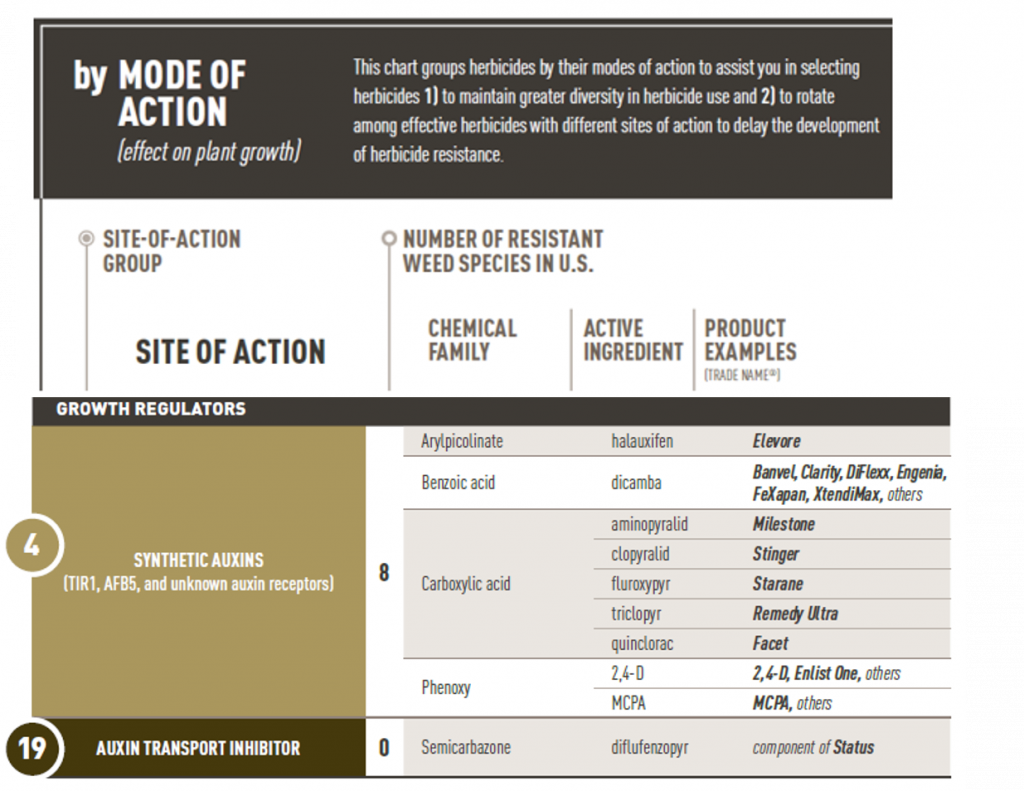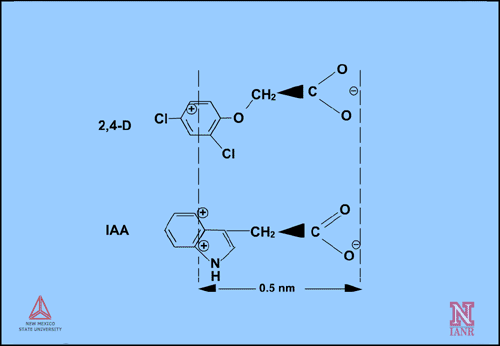Chapter 17: MOA Part 3: Growth Regulators (Auxinic Herbicides)
17.3 Herbicides that Mimic or Interfere with Auxin

The auxinic herbicides were among the first selective synthetic herbicides developed and were first discovered independently by British and American scientists during the 1940s. The selective control of broadleaf weeds in cereal grain crops by auxinic herbicides has made this group one of the most widespread and important herbicide families. They are applied postemergence. Depending on the class, they may have soil as well as foliar activity.
This class of herbicides is termed the ’auxinics’ because:
- They resemble the structure of the natural plant hormone auxin (indole-3-acetic acid, also known as IAA).
- They cause physiological effects in sensitive plants similar to those caused by high doses of IAA (rapid and/or uncontrolled plant growth).

Synthetic auxinic herbicides possess several similarities to the natural auxin, IAA. These similarities include:
- Dose-response patterns, whereby at low doses they act as plant-growth regulators and have a stimulatory effect on plant-cell growth, while at high doses they display phytotoxic effects.
- Some (e.g., 2,4-D, picloram, dicamba) can replace IAA as the hormone supplement used for proper cell development in plant-cell culture medium.
- Differential sensitivity has been observed among different tissues as well as between tissues at different physiological stages of growth.
- Auxin and auxinic herbicides induce growth by cell elongation as opposed to cell division.
Common features among the auxinic herbicides are:
- They are applied POST emergence for the control of broadleaf weeds in grass crops or systems.
- Their soil residual activity varies with individual herbicides.
- Some are volatile.
- They translocate from leaves or roots to growing points.
- Selectivity in tolerant grasses is due to restricted translocation, enhanced metabolism, and the lack of a vascular cambium. Selectivity in broadleaf species is due to metabolism of the herbicide to a non-toxic form.
Here are some time-lapse videos of susceptible plant responses to these herbicides:
For the full list of Ohio State University’s Weed Science herbicide time lapse videos, go to: https://www.youtube.com/playlist?list=PLrQLElJHkjuh65RjQZ8nWDBh0Da_MekB0
Examples
Phenoxyalkanoic acids Family (Phenoxy) – Group 4 (HRAC Group O)
Benzoic acids Family – Group 4 (HRAC Group O)
Carboxylic Acid (Pyridinecarboxylic and Quinolinecarboxylic acids) Family – Group 4 (HRAC Group O)